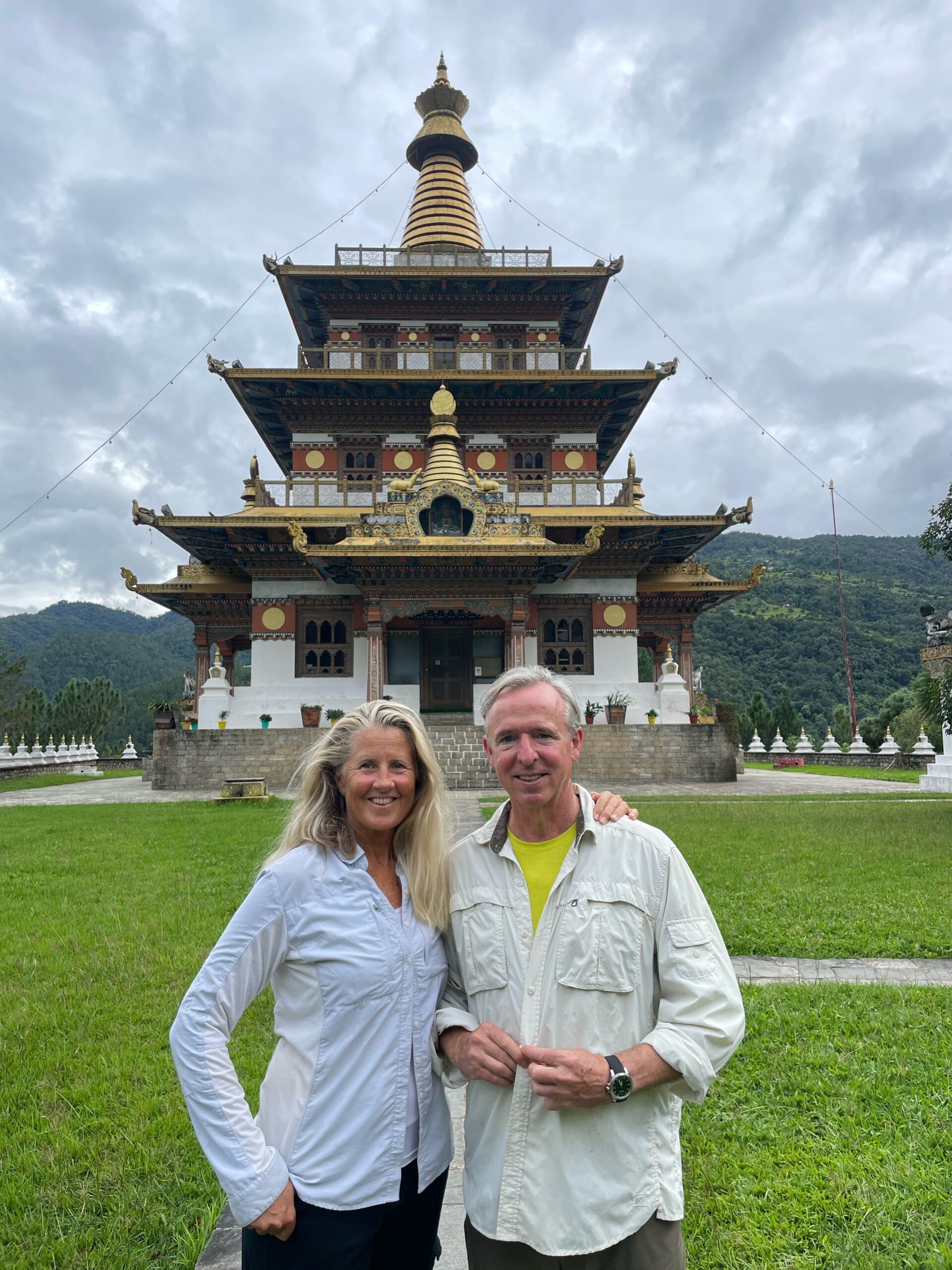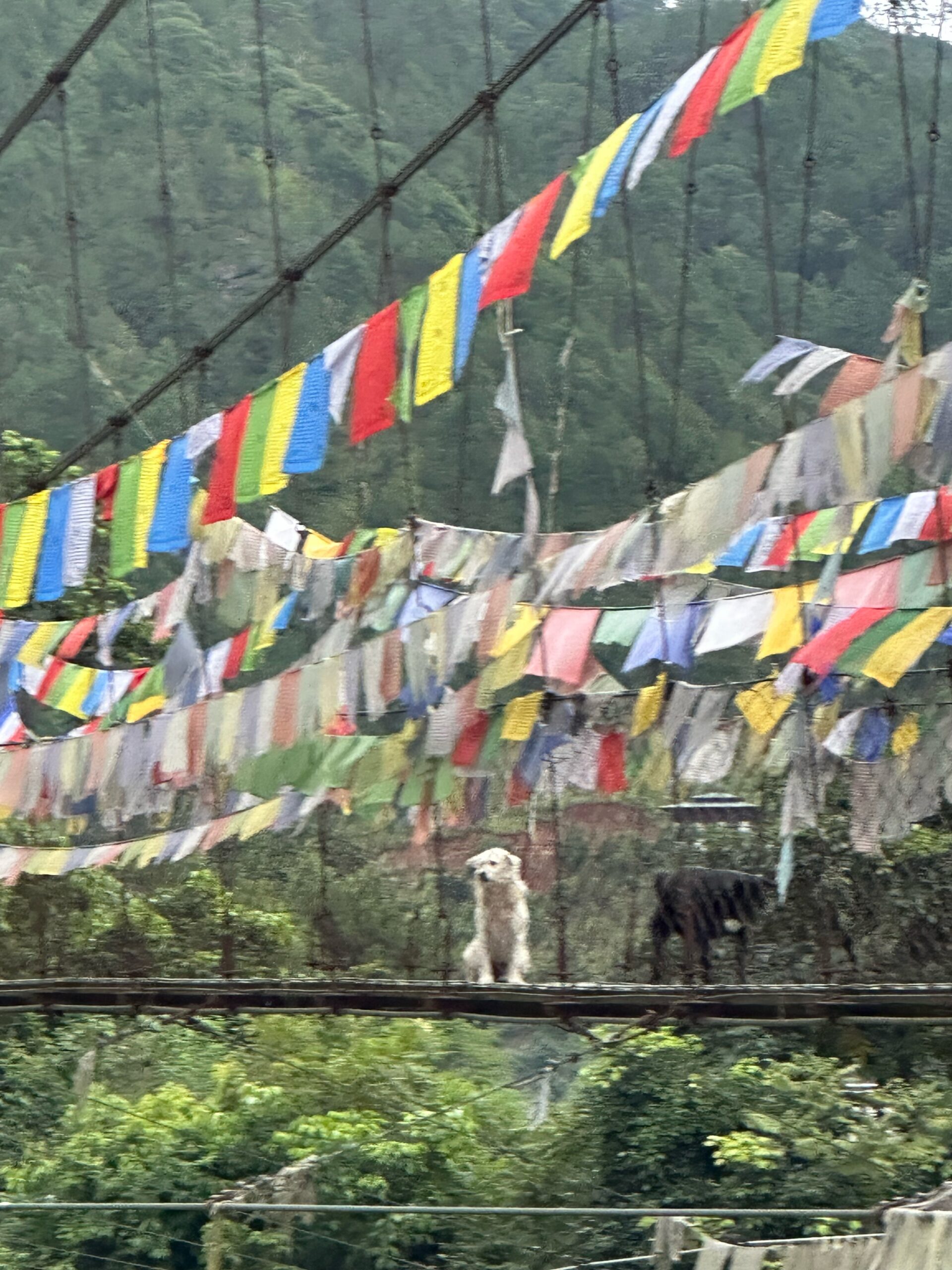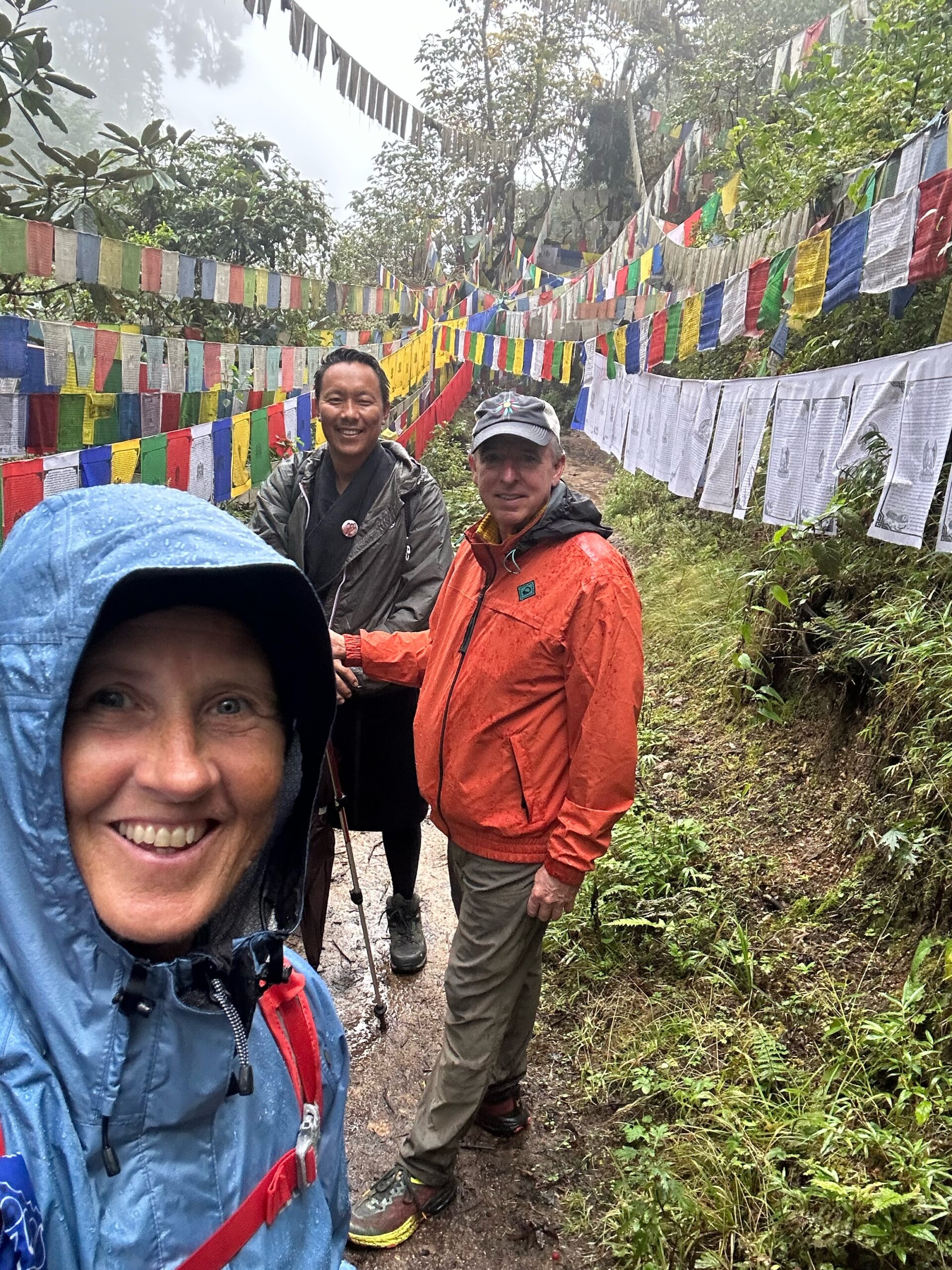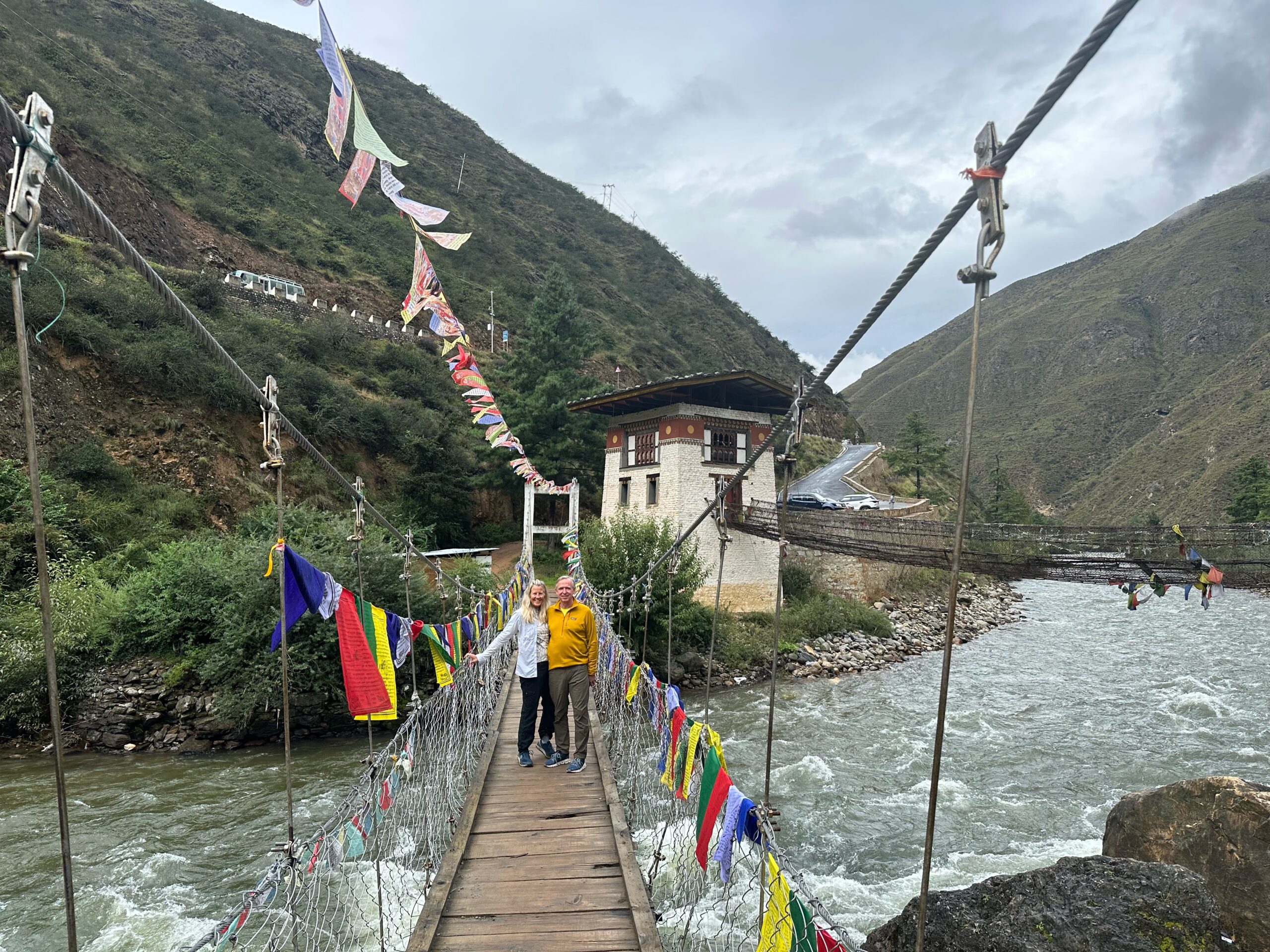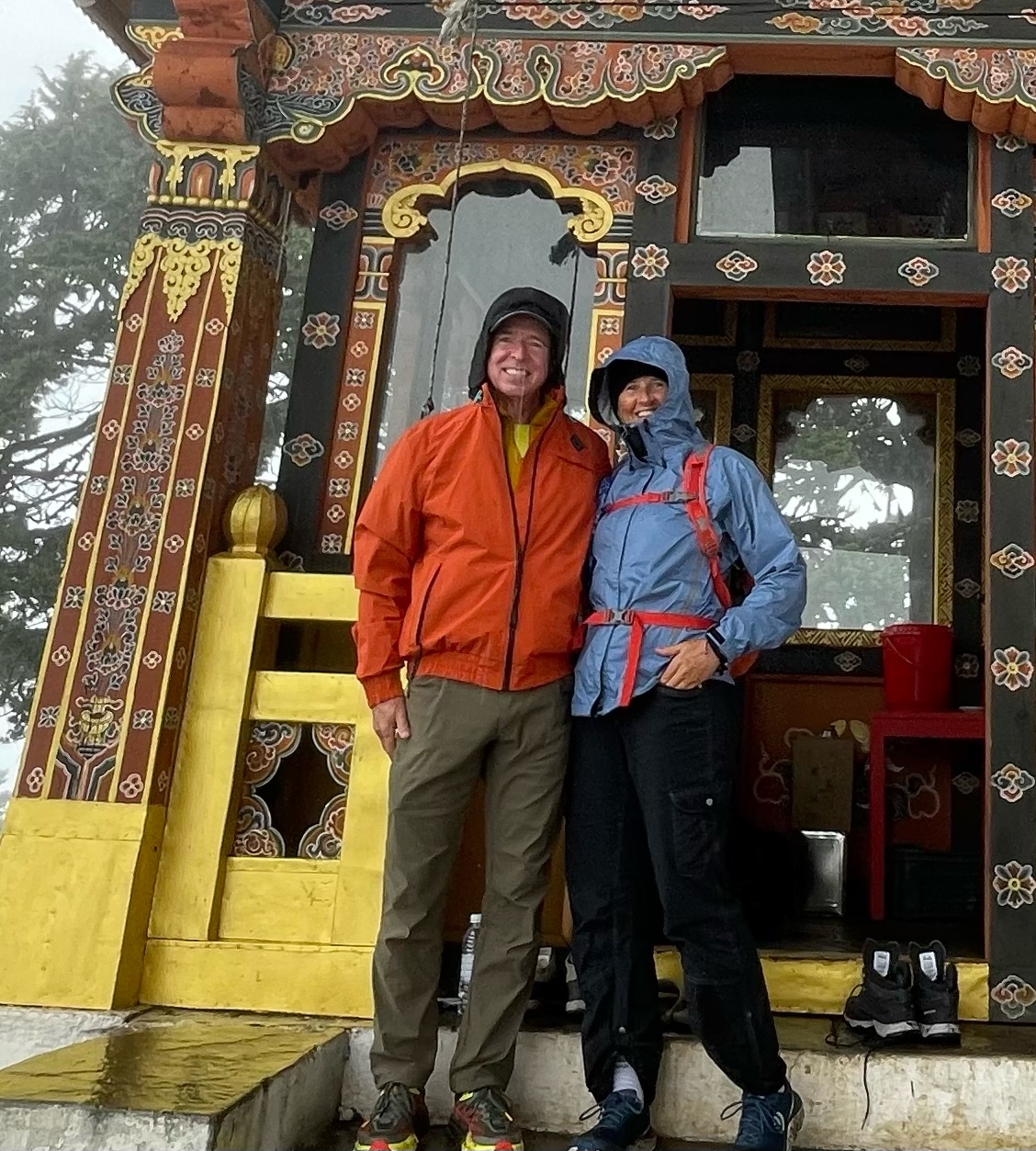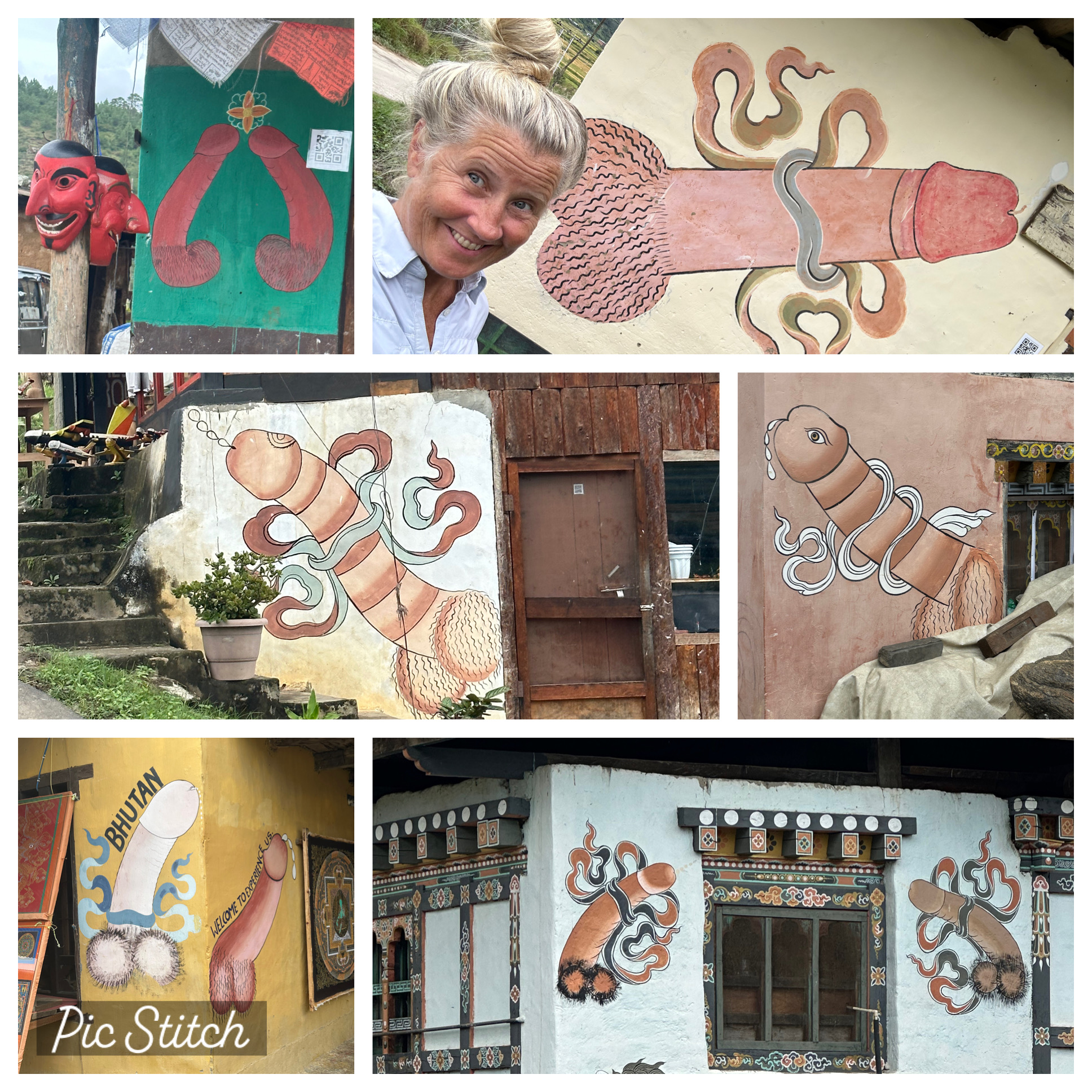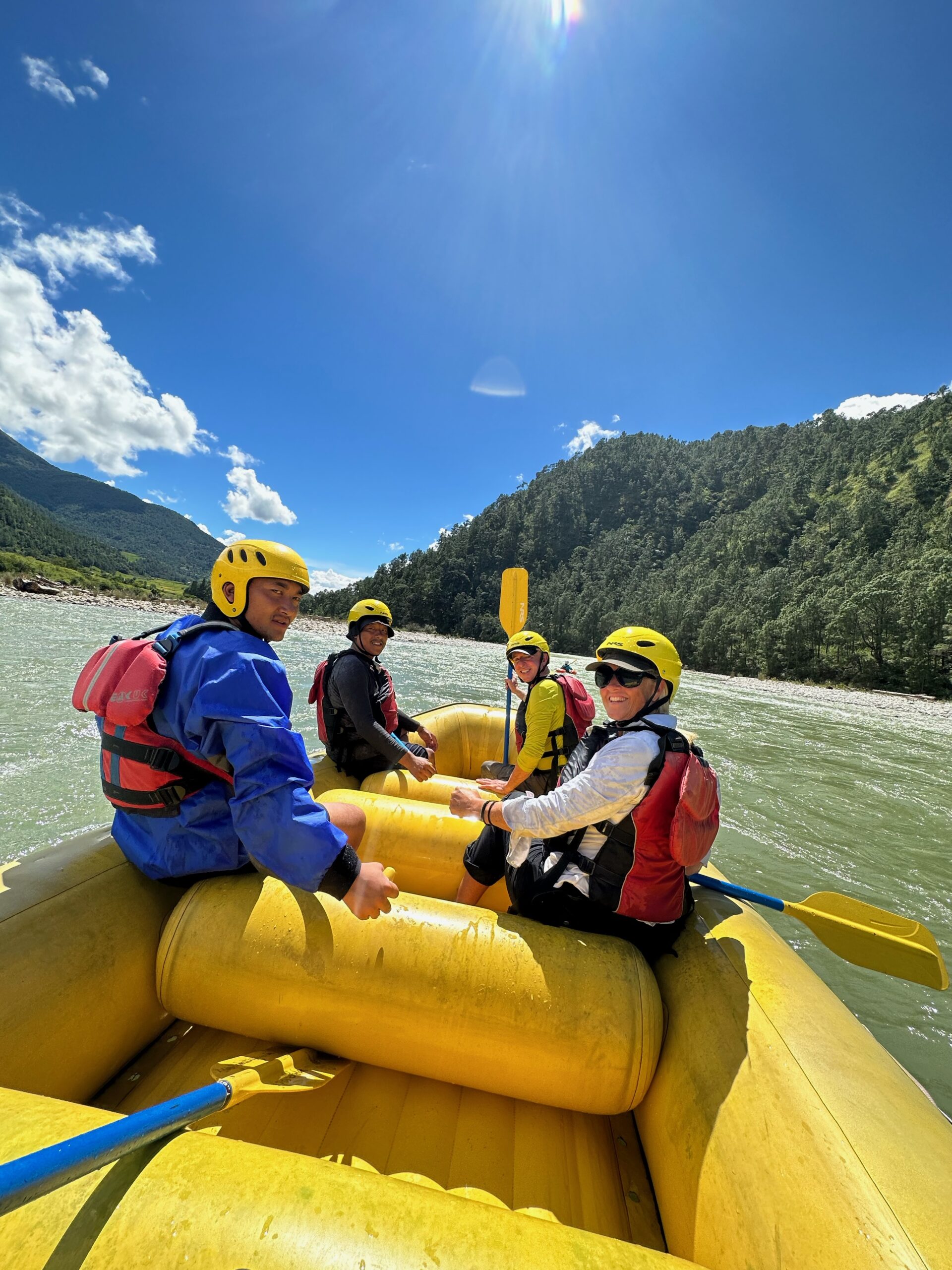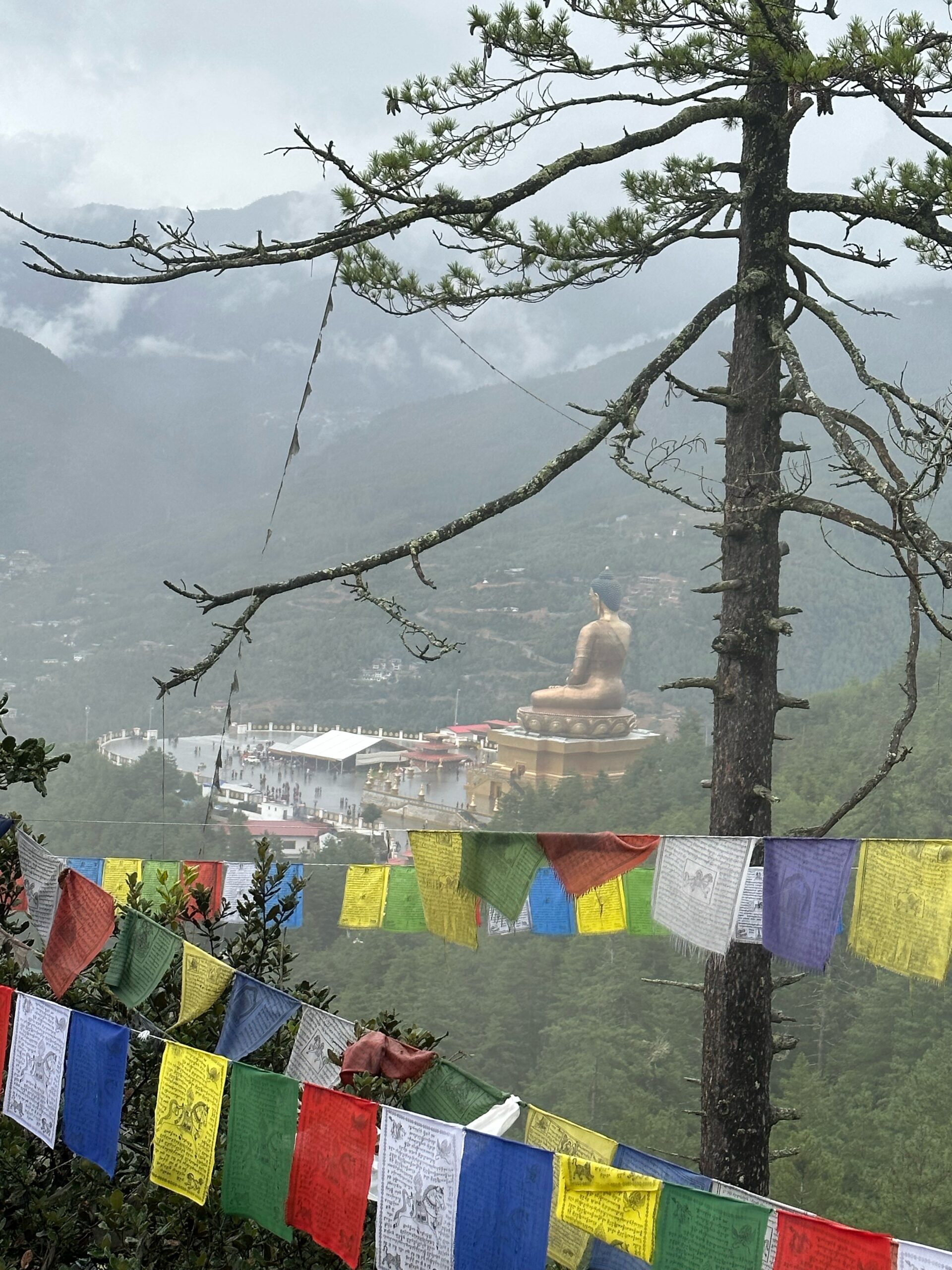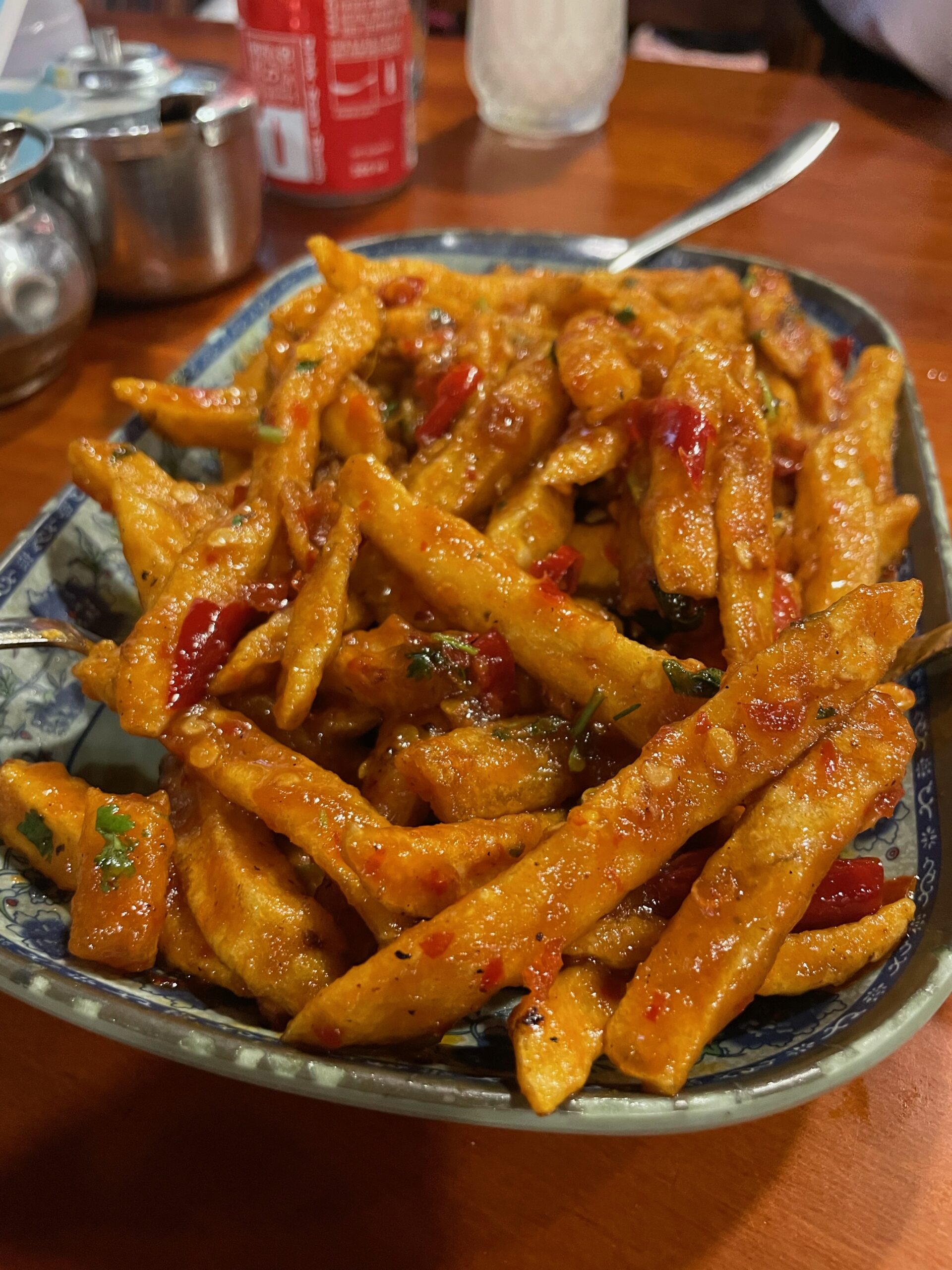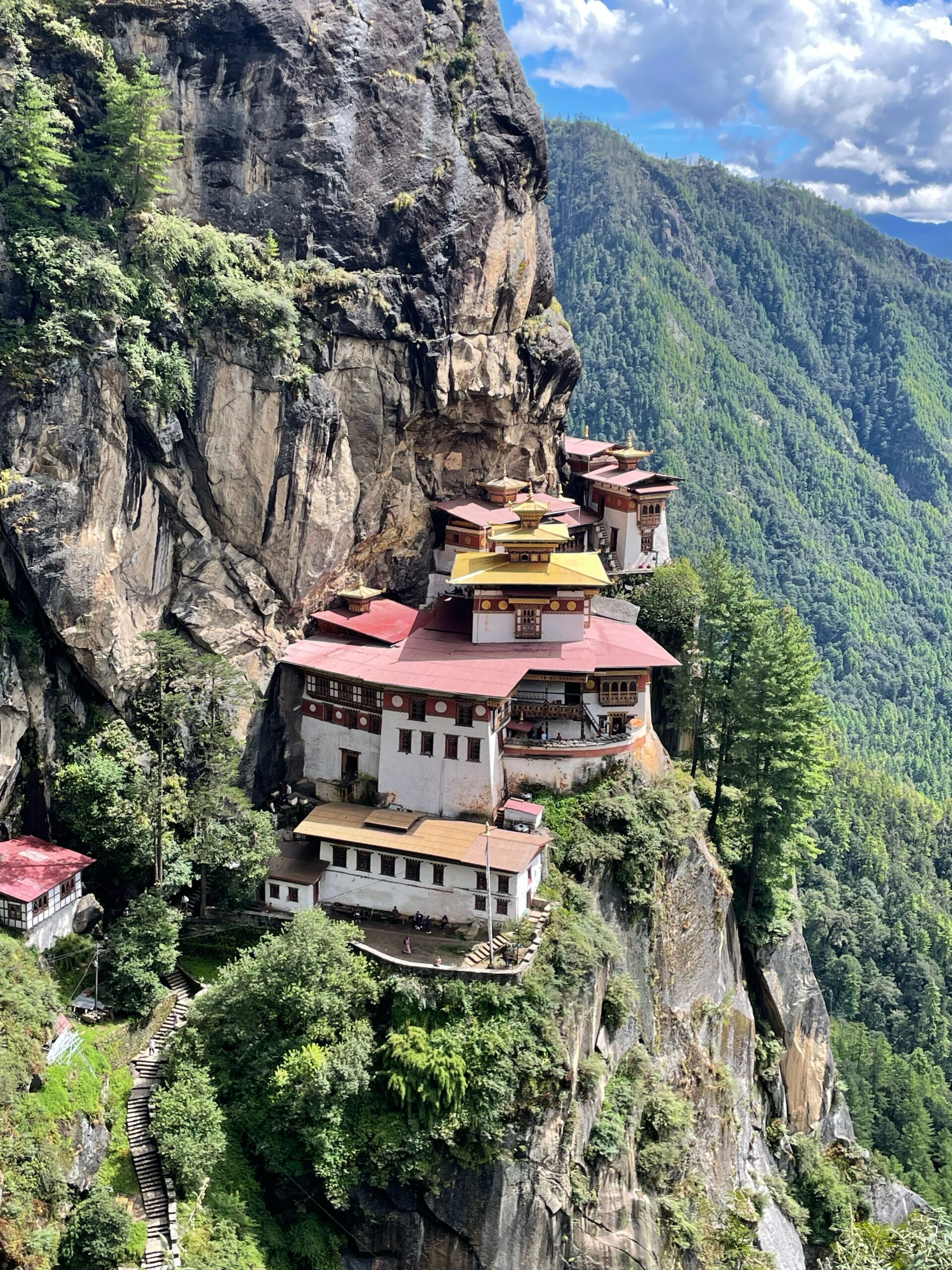Referred to as “the last bastion of an ancient way of life in the modern world,” Bhutan seems to be that one country people have on their bucket list. I did as well, until recently.
By Jeanine Behr Getz
This seven-day journey was the most magical experience, make your reservations ASAP and prepare to embrace the four pillars of Buddhism, compassion, loving kindness, non-attachment and karma, that epitomize Bhutan.
The landscape of Bhutan is out of this world peaceful and majestic, you are immediately aware, that it is valued, from the bustling cities to the most remote corner of its 14,825 square miles (the size of Switzerland); BUT it is the Bhutanese people (with a population close to 800,000) that will leave you contemplative. The people exude gratitude and have a humble confidence, a celebratory warmth of hospitality, a spirituality that captivates your soul, a genuine pride of their country, community and family and an admirable united unwavering loyalty to their King that can make a Westerner jealous.
Nestled in the lap of the mighty Himalayas, the Kingdom of Bhutan, is known as the most mountainous country in the world, mountains cover 98.8% of its total area. It is a landlocked, independent country, located in South Asia, surrounded by Tibet, Bangladesh and Myanmar and Nepal off to its west via India. Bhutan is often referred to as the “Land of the Thunder Dragon” and its King (currently the 5th King rules) is referred to as Dragon King. It’s a democratic, constitutional monarchy and is the only country with Mahayana Buddhism as its official country religion. Politics and religion have a unique relationship deeply embedded in the country’s cultural, social and governance framework.
Controlled tourism is a contributing key to the preservation of this wonderland. There are only two airlines allowed (Druk Air and Bhutan Airlines) and 8 pilots in the world qualified, to fly in and out of Bhutan. Before a visit, tourists need to apply for a visa (takes 2-3 weeks), secure a Bhutanese guide/travel group and pay a daily tourist fee (known as a Sustainable Development Fee, 100 USD a day). Gas and food are inexpensive but modern hotels and souvenirs reflect New York prices.
From landing to departure, every corner of Bhutan we explored revealed a folklore, a breathtaking panorama, and an insightful encounter with an ancient culture that has seamlessly embraced modernity while cherishing its heritage and national pride.
Hope our journey of discovery through some of Western Bhutan’s must-see destinations inspires your soul and travel plans.
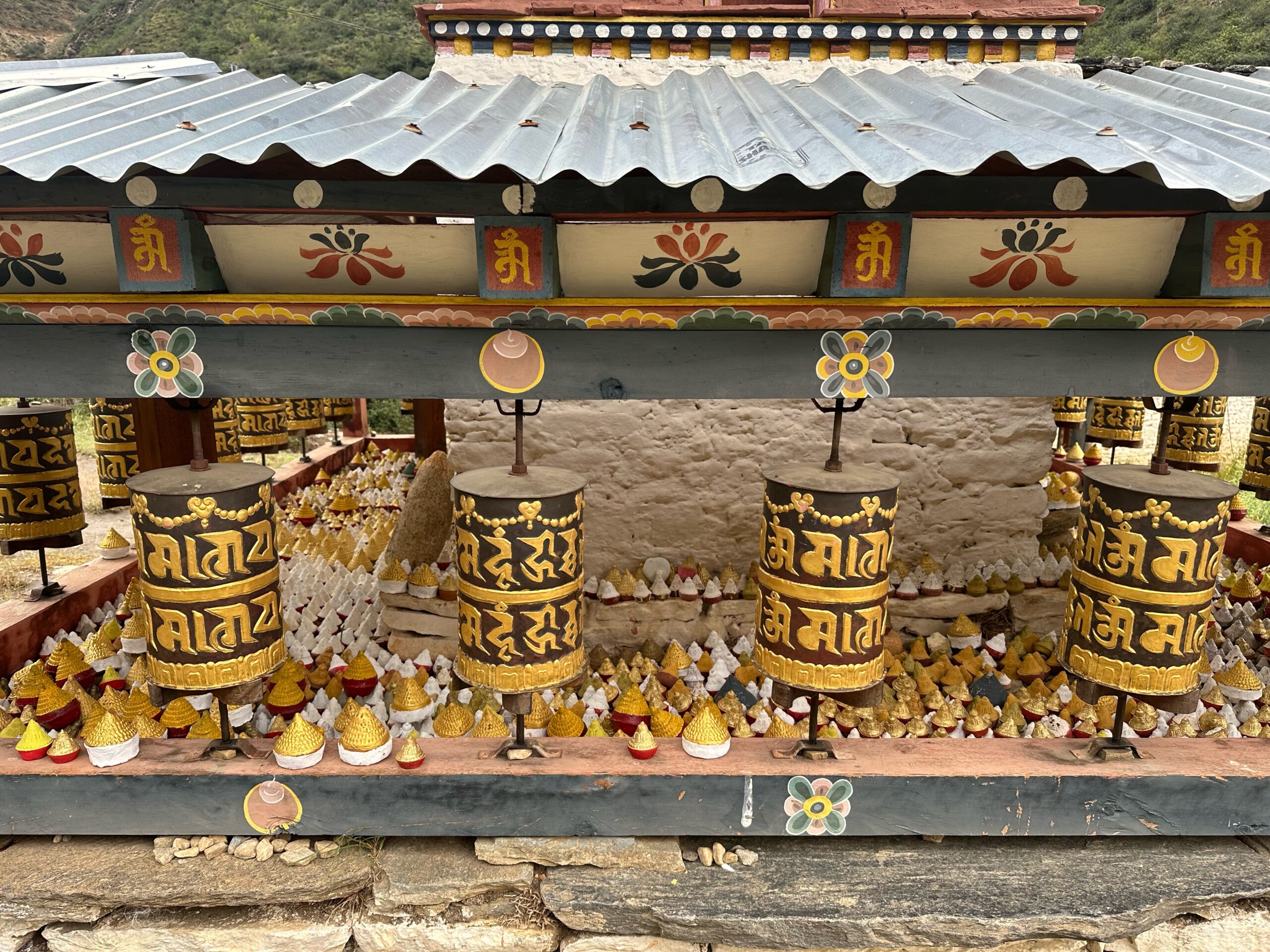
Day 1: Arrive Paro Airport, Western Bhutan region, via Katmandu, Nepal on Druk Air
Paro Airport is deep in a valley 7,332 ft above sea level and is surrounded by mountains as high as 18,000 ft. (Sit on the left side of the plane to take in the amazing in-flight views of Everest and Lhotse peeking through the clouds.)
One could feel the Bhutanese hospitality, country pride and loyalty to their King from the moment you exited the plane. Clearing immigration was like a meditation practice, a clear sense of calm overcame you. Outside, we were greeted with warm smiles by our host guide and driver for the week, Jigme and Phuentsho, dressed in Bhutanese traditional apparel, and we were donned with khatas around our necks, think Bhutanese version of a Hawaiian lei (this happens at every hotel as well). Opting to make the most of our first day, we enjoyed, the first of many, honey ginger lemon teas at a local café while reviewing our itinerary. We had previously been in Nepal for a few days, so no acclimatization was needed.
After a short drive and quick outfit change at the trailhead, our first hike was an easy peaceful day hike through pines and cypress up to the Zuri Dzong overlooking Paro Valley. Jigme carried tea and snacks for rests and treated us to the stories of how the cypress arrived there, the history of the fortress and explanations of the caves, prayer flags and tsa tsas along the way, showcasing the timeless essence of Bhutanese identity and the enduring compassion, dedication and resilience of its people, we were beguiled. After the hike, Phuentsho whisked us off to Pema’s Farmhouse, effortlessly evading the cows, horses and dogs that commonly share the paved roads with cars and trucks, where we were treated to a private tour of a traditional house and lifestyle of a Bhutanese family and a delicious lunch of local cuisine (my favorite was ema datshi), butter tea and ara. Vegetarian dishes are common in Bhutan, but meat dishes are readily available, 50% of their food is imported. Try everything once, maybe the ara twice.
After a gratifying lunch we visited the oldest temple in the Buddhist Himalayas, Kyichu Lhakhang, built in the 7th century. It was decorated with banners for a recent special occasion attended by the King and Queen, making the outside dance with fanciful colors, only to be outshined by its colors inside. We engaged with our first prayer wheel, blindly abandoned our shoes and cameras/phones outside in a courtyard near a magical mandarin tree, that is said to bear fruit throughout the year. As we entered the small dark temple it was lit by 20ft gold statues of the future Buddha and Buddha Sakyaunithe, hundreds of colorful offerings, candles, butter statues, incense and 8 monks chanting. Our guide led the way without hesitation, and we awkwardly followed; imitating him, making our prostrations, giving an offering and taking a seat behind the uninterrupted monks for a moment of meditation and reflection. The original shrine has one of the greatest treasures of the valley, a statue of Jowo Jamba from the 7th century and the wooden floor that has grooves worn by the generations of prostrators. Our first of many transformative Bhutanese experiences.
Hard to believe this is only the end to Day 1, what a debut to Bhutan. We drove to our first hotel, the Le Meridian Paro riverfront for the evening.
Day 1 Paro highlights: Hike to Zuri Dzong, Pema’s Farmhouse & lunch, Kyichu Lhakhang Temple
Day 2: From Paro to Thimphu to Punakha Valley
Early start for a 1 ½ hour drive from Paro to Thimphu, this 50 km trip would have taken a lot longer before paved roads were started in 1961. Although there is a reassuring civility to driving in Bhutan, it is an adventure all onto itself. We drove on winding and narrow roads dwarfed by the mountains on either side, out maneuvering the dogs and livestock and colorfully decorated trucks, reading road signs reminding you about good karma, making pitstops at a few of the hundreds of roadside stands selling fresh produce and chhurpi, and taking in the landscape of red dotted rooftops drying red chili peppers, the tsa tsas honorably placed and the prayer flags adorning the hillsides.
The beauty and intricacies of Bhutan are challenging to fully capture into written words.
After picking up our boxed lunches for our day, we took a worthy unplanned stop at Tachogang Lhakhang Bridge across the Paro River. This was the first iron bridge built in Bhutan around 1443 by Thang Tong Gyalpo. Folklore is woven into the fabric of everyday Bhutanese life. Mahasiddha Thang Tong Gyalpo is known as the Iron Man of Bhutan. It is said that he was the Leonardo de Vinci of the Himalayas.
Next, we headed up to Dochula pass to begin one of the best day hikes in Bhutan to the Lungchutse Temple. On a clear day, the Dochula Pass is a panoramic viewpoint offering stunning vistas of the Himalayan Mountain range, but on a rain gear, white out kind of day, like we had, the mountain range remained obscured. We hiked through ancient forests of rhododendrons, 500-year-old hemlocks, wild flowers, prayer flags and tsa tsas; unphased by the sheets of rain, we reveled in a sense of calm and curiosity of our surroundings. We ate our lunch at a picnic table under an eave of a caretaker’s home with a knowing dog waiting patiently by our sides. It’s good karma to be compassionate, kind and to share.
If you come to Bhutan curious, open minded and earnest for understanding, each Dzong, Temple, Fortress and folklore will awe you.
After our long hike, a ginger honey tea and cookies at a roadside café we were on our way to Punakha Valley for a two-night stay at the Densha, a boutique hotel that feels like a luxury treehouse positioned high up in a pine forest overlooking the Punakha River. This is a must-stay hotel, the food and nightly traditional dance performances were perfection.
Day 2 highlights: Tachogang Lhakhang bridge, stops at roadside stands, Dochula Pass hike to Lungchutse Temple and the Densha
Day 3: Hiking Punakha Valley
A great guide makes a visit to Bhutan come alive. Day 3 was equally matched to our previous two days in the number of sights to behold, history learned and miles covered.
Our first stop was to Pungthang Dewachen Phodrang (Palace of Great Happiness) aka Punakha Dzong, the second oldest and second largest dzong in Bhutan. Punakha Dzong stands majestically at the confluence of the Pho Chhu and Mo Chhu rivers. Its grand architecture, adorned with intricate woodwork and vibrant murals, houses sacred relics and reflects the rich cultural heritage of the region. As an example of its scaredness, our guide donned his formal kabney before we entered. A visit to this architectural marvel offers a glimpse into Bhutan’s regal past and its enduring spiritual legacy.
Our second stop of the day entailed a short hike through the Lobesa Village to a Buddhist monastery also known as the fertility temple, Chimi Lhakhang, built in 1499, dedicated to the “Divine Madman” or Drukpa Kunley. Bhutan’s favorite saint, The Divine Madman, was a Tibetan monk, that came to Bhutan in the 15th century to share his Buddhist teachings with the common people using crass and lewd methods. His sacred site lays nestled amongst rice fields and orchards and is renowned for its fertility blessings. The trek to the temple offers a blend of spiritual reverence and lighthearted cultural symbolism will leave a lasting impression. The phallus is a mystical emblem in Bhutan that represents protection from evil, good fortune and is a symbol of fertility. I admit, on this trek, I succumbed to juvenile ogling at the phallus statues for sale in the storefronts and painted on the walls of traditional Bhutanese homes. People make pilgrimages from all over the world to this temple seeking its fertility blessings. We witnessed one such seeker carrying a 36-inch wooden phallus, tied with a white scarf, seeking a blessing and a baby name chosen for her by a monk. Your guide will surely educate you on all the rich folklore surrounding this stop. As an aside, for art collectors, there is a shop, first one on your left after the initial village, that features very talented emerging Bhutanese artists.
After lunch, we headed to Yepasia Village for our last hike of the day to Khamsum Yulley Namgyal Chorten, also known as the Queen’s Temple. There were several rafts launching into the Mo Chhu River as we crossed a suspension bridge starting our ascent through rice fields up to the temple. As the story goes, when the current Dragon King (aka K5, King 5 or the People’s King) was born, under the sign of the monkey (not a confident leadership sign), his mother, the 3rd wife (of four wives – who are all sisters) of King 4, was told to build a stupa to head off negative forces and transmit peace and harmony for Bhutan, and her son’s reign. Each of the four floors are dedicated to wrathful deities and male/female unions representing the union of wisdom and compassion. The views from the top floor look over the Punakha Valley are stunning.
We returned Dhensa Resort for the night.
Day 3 highlights: Tour of Pungthang Dewachen Phodrang (Palace of Great Happiness), hike to Chimi Lhakhang (Fertility Temple) and hike to Khamsum Yuelly Namgayel Chorten (Queens Temple).
Day 4: Hiking & rafting in Punakha to Thimphu (the capital of Bhutan) – Day 5: Thimphu
Our morning started with a short drive to the trailhead of the 5-mile hike, upriver, to our rafting launch site on the Pho Chhu River. With prayer flags waving from its sides, we walked across the Pho Chhu River on Bhutan’s longest suspension bridge (590 feet), the Punakha Suspension Bridge, offering spectacular 360-degree views of the surrounding valleys, mountains and rivers. Today the sun was blazing as we trekked our way up, over, through and alongside the flora and fauna of forests, farms, rice fields and the river. It had been raining for a few days, so the river was full. Rafting down the Pho Chhu River was an exhilarating adventure, we only lost one person, temporarily, through thrilling rapids and serene stretches, down past the landscape we had just hiked: underlining Bhutan’s natural beauty from another unique perspective. By land and water, both experiences offered yet another unforgettable immersion in Bhutan’s scenic wonders and adventurous spirit.
After a quick change into dry clothes, we feasted under a tent at a private Bhutanese lunch, on cultural delights of ema datshi, jasha maroo and red rice while overlooking the resplendent Pungthang Dewachen Phodrang.
After lunch, enroute to Thimphu, we took another shot at taking in the panoramic views of the snowcapped peaks of the Himalayas from the Dochula Pass. To no avail, the view eluded us again. Although we were rewarded with the spiritual atmosphere of 108 chortens (or stupas) built in honor of Bhutanese soldiers.
Arrived in Thimphu, declared the capital of Bhutan in 1961 by K3 (aka King 3), for our two-night stay at the ornate Pemako Hotel.
Day 4 highlights: 5-mile hike, Punakha bridge, rafting Pho Chhu River, lunch overlooking the Palace of Great Happiness, Dochula Pass 108 Chortens
First stop of Day 5 was to the Takin Preserve in the Thimphu city center, aka Thimphu Wildlife Conservation Center. This was a sanctuary dedicated to the preservation of Bhutan’s national animal, the Takin. It looks like a cross between a goat and cow, and of course it too has a rich folklore history. This stop is worth a visit to observe the Takin and other native animals up close.
Our first day hike of the day was the Wangditse hike to the Wangditse Monastery, the oldest temple in Thimphu. One never tires of hiking through lush forests and prayer flags fluttering in the breeze nor meandering on paths with occasional steep ascents that lead up to monasteries and temples. This hike rewarded us with spectacular views of the Thimphu Valley, manidhar raised on surrounding mountains and with intense spiritual kindness shown to us by the Monks that lived there. There was a very powerful ambiance here.
Back in Thimphu for a feast of noodles and chili fries at a local spot! Chili fries are Bhutan’s version of disco fries. Yum! We worked lunch off with a walk up 300 steps to the fifth tallest Buddha (at 169 feet) in the world. The Giant Buddha Dordenma, made of bronze and gilded gold, completed in 2015. It was built to commemorate the hundred years of monarchy and is considered a symbol of peace and happiness. On this day, there were no less than 1,000 Bhutanese seated at its feet, paying their respects through prayer and chanting.
Our day divided at Giant Buddha. Robert left to play a round of golf at the Royal Thimphu Golf Club, one of the world’s high elevation courses at 7,700 feet, set right in the middle of the city, with the Himalayas as its backdrop and I hiked a section of Bhutan’s ambitious long-distance trekking trail system, the Trans-Bhutan Trail, starting behind the Giant Buddha Dordenma. The Trans-Bhutan Trail is a network of trails that traverses the entire country. Hiking this section was moderately challenging and completely rewarding.
At the end of the day, we returned to Pemako for our second night stay.
Day 5 highlights: Takin Preserve, Wangditse hike and monastery, noodle lunch & chili fries, section hiking Trans-Bhutan Trail and a round of golf at the Royal Thimphu Golf Club.
Day 6: From Thimphu to Paro Taktsang (The Tiger’s Nest) Monastery
On our drive to our final hotel, we stopped at a local weekend archery match. Archery is Bhutan’s national sport. This archery match was a competitive and festive atmosphere; players wore traditional colorful attire and celebrated their victories with music and dances. The match showcased the men’s archery skills, shooting long bows at targets 150 yards away, and their sense of community and country pride.
The last stay of our visit was at Zhiwa Ling (meaning Place of Peace) Heritage Hotel. This was the absolute perfect spot to bathe in the glow of the sun setting over the Himalayas, marvel at the intricate Bhutanese architecture encircling us, and savor traditional delicacies and impeccable Bhutanese hospitality.
Day 6 highlights: Tiger’s Nest, Archery match & Zhiwa Ling Heritage
Day 7: Depart Paro Airport, on Bhutan Airlines to Bangkok, Thailand
Bhutan and its people exemplify the four pillars of Buddhism, effortlessly, and their overall commitment to preserving their cultural heritage and natural environment has created a coveted harmonious society where tradition and modernity coexist in perfect equilibrium.
A visit to Bhutan is not just a journey through a geographical landscape; it is a spiritual and cultural odyssey that awakens the senses and nurtures the soul.
One visit is just not enough.
See you outside,
Jeanine
To help you plan your trip – Logistic Highlights:
Highly recommended guide: Namgay Adventure Travels
Advanced travel requirements: Travel Visa, confirmed Bhutanese guide or approved tour company, travel insurance and payment of daily Sustainable Development Fee
Favorite places to stay: Dhensa and Zhiwa Ling Heritage
Favorite foods: All the food was delicious, but chili fries and ema datshi were favs!
Best communication app: WhatsApp
Money: Bring USD. 1USD = 83 BTN (Bhutanese Ngultrum (BTN) is not available outside of Bhutan)
Electric outlets: Bhutan used 230V/50Mhz – I used plug type G adapter the entire trip
Clothing used: For temples, arms and legs should be covered. We wore hiking type gear day and night. We packed many layers.
Glossary of terms:
Ara: Is a traditional alcoholic beverage consumed in Bhutan. Ara is made from rice, maize, millet, or wheat, and may be either fermented or distilled.
Butter lamp: The symbolism of lighting a butter lamp is to dispel ignorance and darkness, reflect on the impermanence of all things & inter dependency on everything and offering of prayers of good will
Butter statues: Monks have been making butter statues in Bhutan for more than 400 years; made from yak butter and dye they are still used to create temporary ritual offerings for altars.
Butter tea: This protein-rich and salty drink helps provide nourishment and hydration at high altitudes and is said to help alleviate altitude sickness.
Chortens: (aka stupas), Are serene and peaceful religious monuments that are built in a precise way and are a receptacle for worship or offering.
Chugo: (aka chhurpi) is a type of hardened cheese made of yak’s milk. You can find these hanging from strings at the roadside stands. Said to nourish you on long hikes.
Dzong: Dzongs or Bhutanese fortresses originated in 12th century and their main purpose was to fend off enemy’s attacks and be the seat of central authority.
Ema Datshi: Is a spicy mix of chilies and cheese. This is the national dish of the country.
Gho: The national dress for men in Bhutan
Kabney: When visiting the dzong or government offices bearing the national flag, Bhutanese will wear a silk scarf called a kabney from left shoulder to the hip over their traditional garb. The rank of the bearer will determine the colour of kabney that he or she wears. The King and Chief Abbot wear the same color kabney. The commoners will wear a white kabney (males).
Khata: A khata is a fabric scarf that conveys well wishes and respect
Kira: The National dress for Bhutanese women
Prayer flags: Are made of block-printed fabric using traditional printing techniques from centuries ago. Not only the person who mount the flags will receive good karma but all the sentient beings will benefit from the blessings carried by the wind.
Meaning of the different prayer flag’s color:
White (air) – Good fortune and purifying negative karma
Blue (sky/space) – Health and longevity
Yellow (earth) – Victory over obstacles
Green (water) – Compassion
Red (fire) – Wish fulfillment
Two most common types of prayer flags that can be found in Bhutan:
-Lungdhar – Colorful rectangular flags commonly found all over Bhutan from mountain passes, bridges, around the monasteries or stupas.
-Manidhar – Tall white prayer flags vertically attached to the poles. They are raised after a person has died as a remembrance for the deceased. It is believed that there are blessings from hoisting 108 of Manidhar prayer flags.
Prayer wheel: Buddhist texts speak of “turning the wheel of dharma” which led to the concept of the prayer wheel, a mechanical device that consists of an embossed hollow cylinder and a rod that runs through its height. Inside the rod is a tightly rolled-up scroll of mantras.
Spinning the prayer wheel is equivalent to reciting mantras. Each spin of the wheel is as effective as reciting the mantras orally, multiplied by the number of times the mantra is printed on the scroll. You will see a six-syllable mantra on most prayer wheels. It is: Om Mani Padme Hum.
Stupa: Is a mound-like or hemispherical structure containing relics that is used as a place of meditation
Tsa Tsa: A miniature stupa. They are handmade sacred images crafted from clay using a metal mold.
They represent the enlightened form of Buddhas and pacify enemies, interferers and harms.

